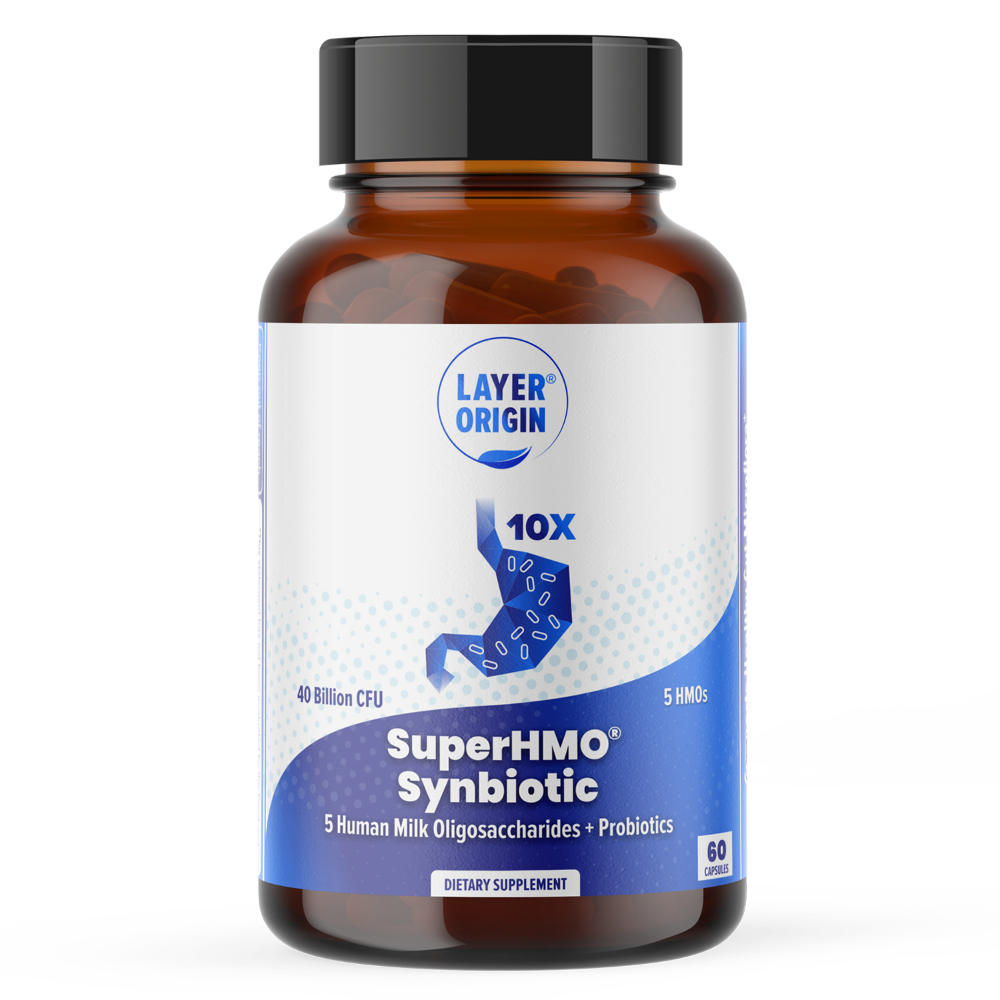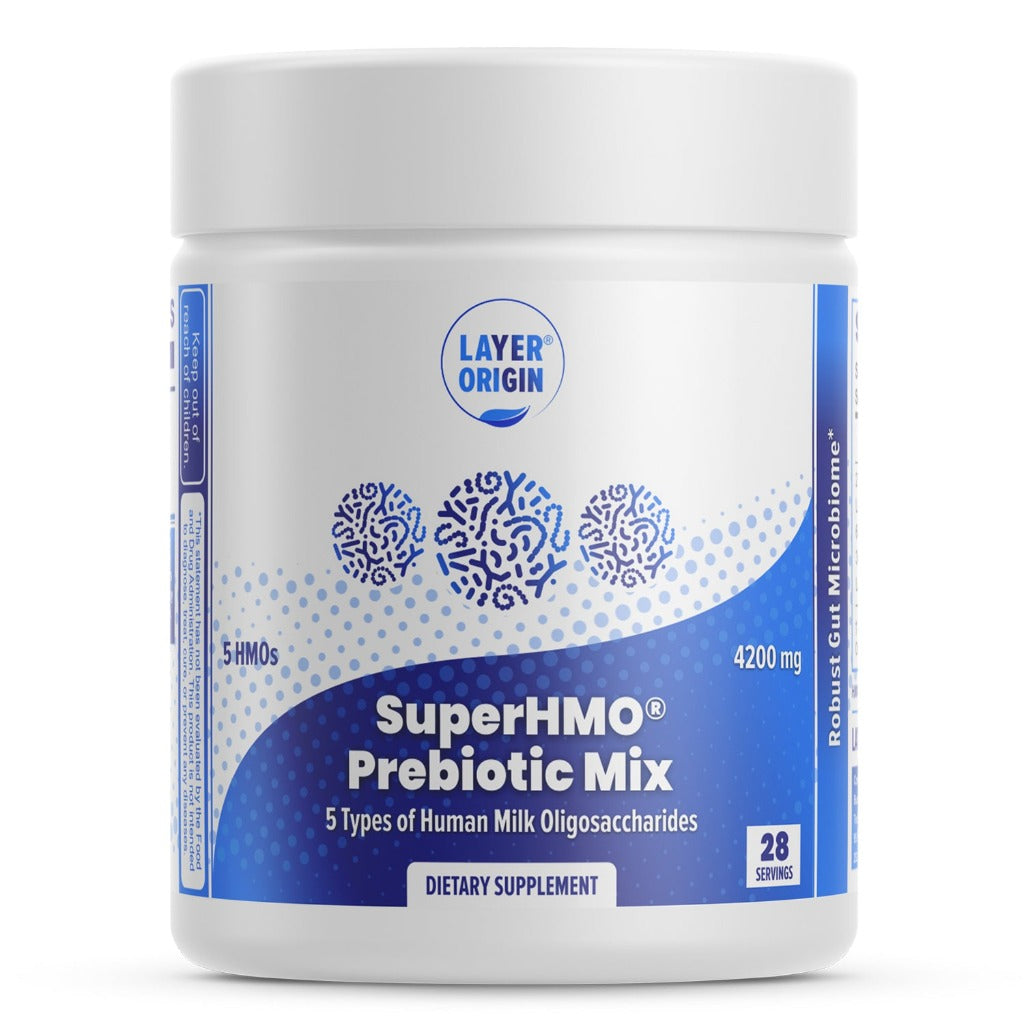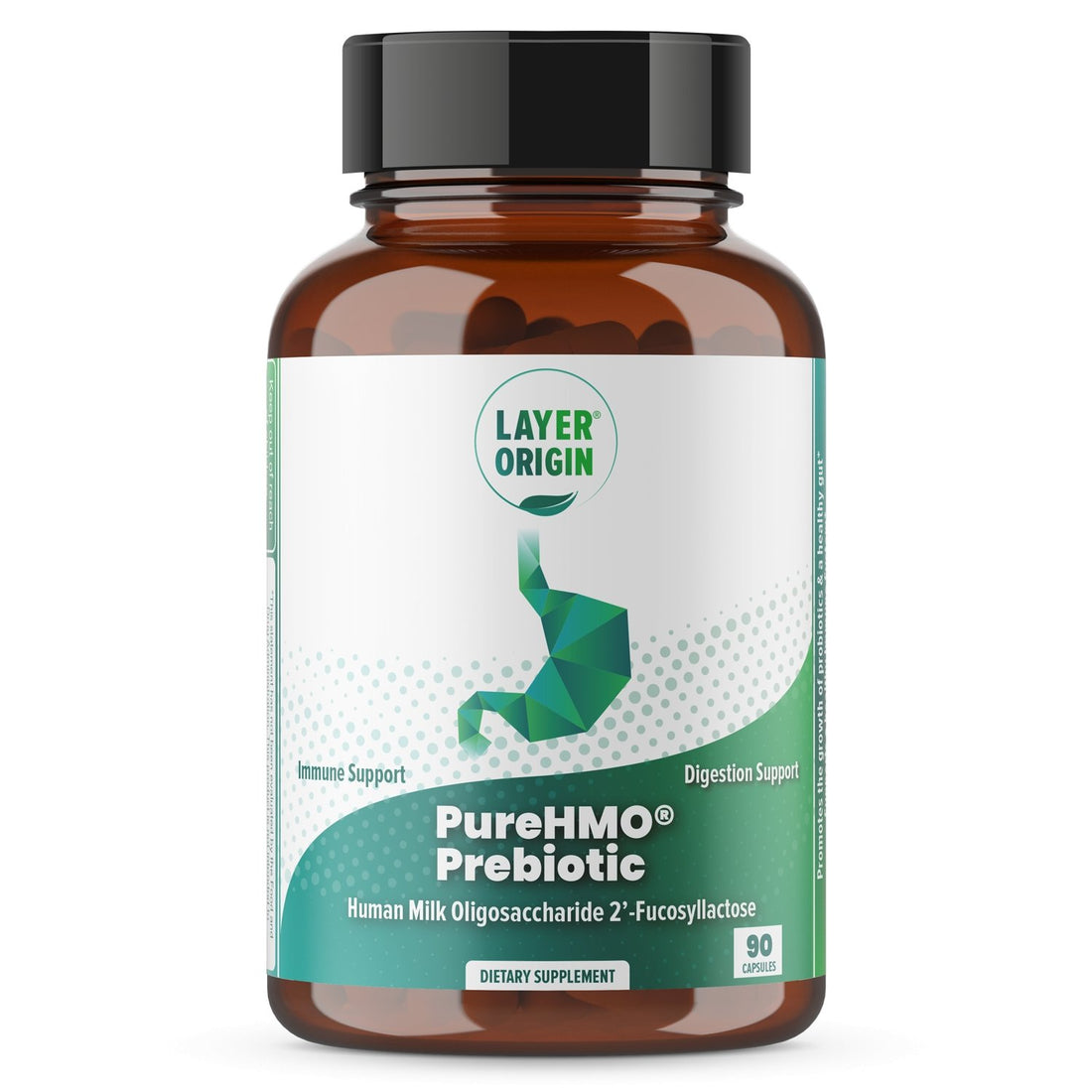If you’re taking probiotics but not seeing results, the problem isn’t the probiotics—it’s what they’re missing: prebiotics, the essential fuel that helps good bacteria survive, grow, and transform your gut health
Content Outline
- Introduction
- What are probiotics?
- Why probiotics alone aren’t enough
- What are prebiotics, and why do they matter?
- Why probiotics need prebiotics to work
- The best ways to support your gut health
- Summary
Introduction
Probiotics are almost everywhere nowadays, from live yogurt and fancy fermented foods to specific supplements; these “good” bacteria have become a go-to solution for gut health. But what if your choice of probiotics isn’t doing much at all? Most people take probiotics for their presumed long-term benefits, often to find that not much has changed.
Why?
The truth is that probiotics on their own are simply not enough. Just like you and I, without the right nourishment, these beneficial bacteria struggle to survive and thrive, meaning you miss their benefits.
That’s where prebiotics come in.
Prebiotics provide the fuel that enables probiotics to complete their jobs, grow, and thrive. Without them, probiotics are practically useless.
So, if you’ve been taking probiotics regularly and are not feeling the benefit, don’t give up yet. Keep reading to learn why prebiotics are the missing link and what you need to do instead.
What are probiotics?
Probiotics are live micro-organisms, mainly bacteria and yeasts, which are purported to have many health benefits. The International Scientific Association for Probiotics and Prebiotics defines probiotics as:
“live microorganisms that, when administered in adequate amounts, confer a health benefit on the host”[1]
Probiotics naturally occur in fermented foods, such as kefir, kimchi, and yogurt, but they are also available in supplement form. Some of the most common probiotics come from the following genera:
- Bifidobacteria
- Lactobacillus
- Saccharomyces
- Enterococcus
- Streptococcus
- Bacillus[i]
How probiotics support gut health
Probiotics support gut and wider health by:
- balancing the gut microbiome
- supporting normal digestion and reducing bloating
- producing beneficial metabolites such as short-chain fatty acids (SCFAs) and vitamins
- supports immune function[2]
Why probiotics alone aren’t enough
Although probiotics can crucially support human health, on their own, they’re almost useless. That’s because probiotics need a food source, called prebiotics, to thrive and unleash their benefits within your gut. Without prebiotics, the probiotics you have spent time and money on won’t survive long enough to significantly change your gut microbiota.
In effect, it’s similar to planting seeds. If you plant them but don’t provide them with water and the nutrients they need, they simply won’t grow.
Probiotics face several challenges before and during their arrival in the gut, including:
- The pH of stomach acid can kill probiotics before they reach their intended destination
- Probiotics can struggle to colonize the gut if they arrive on their own
- Without sustenance, they will die off rapidly, reducing their overall effectiveness
So, if you’ve been taking probiotics regularly for a while now and haven’t noticed much difference, you could be missing a vital component.
What are prebiotics, and why do they matter?
Prebiotics are types of fiber that feed the friendly bacteria in your gut. They help the probiotic bacteria function and grow efficiently. They can be thought of as the fertilizer for your gut microbiota.
So, when your gut microbes ferment or break down prebiotic fiber, they produce metabolites and postbiotics, such as SCFAs, that are released into your blood and go on to positively affect numerous body systems[3].
Some of the ways prebiotics benefit your gut include:
- Influencing the composition of your gut microbiome by promoting the growth of beneficial strains, like Bifidobacteria
- Strengthening the gut barrier function and integrity
- Supporting overall gut microbiome balance
- Reducing the prevalence of infectious diseases
- Reducing inflammation
- Protection against colorectal cancer
- Promoting a feeling of fullness and weight loss to protect against obesity and metabolic disease
- Lowering the risk of risk factors associated with heart disease[4]
However, despite all prebiotics being fiber, not all fiber types are prebiotic. To be classified as a prebiotic, the food or supplement must:
- Resist being broken down by stomach acid and therefore be indigestible
- Be fermented by gut microbiota
- Selectively stimulate the growth and/or activity of gut bacteria with the potential to positively impact the health and wellbeing of the host[5]
Prebiotic sources
Some of the common sources of prebiotics are:
|
Source |
Definition |
Examples |
|
Human milk oligosaccharides (HMOs) |
HMOs are complex sugars that are naturally present in human breast milk. They travel to the colon undigested where they can be broken down by bacteria and transformed into beneficial metabolites, support the immune system, and protect against pathogenic infection[6]. |
|
|
Fructooligosaccharides (FOS) |
A natural plant sugar found in many fruits and vegetables. They are low-calorie and indigestible, so they reach the colon intact and can be used as a prebiotic source for gut microbes. |
|
|
Galactooligosaccharides (GOS) |
Non-digestible carbohydrates are structurally similar to HMOs[7]. |
|
| A form of dietary fiber that is not digested in the small intestine and passes into the colon to be fermented by the gut microbiota[7]. |
|
Why probiotics need prebiotics to work
Probiotics need prebiotics to grow, thrive, and survive in the gut. Without prebiotics, the colon can be a hostile environment for the probiotics your taking.
When consumed together, probiotics and prebiotics act as synbiotics.
Improved probiotic survival
Scientific studies consistently demonstrate that combining probiotics with prebiotics significantly enhances their chances of survival and effectiveness within the gut[8].
Prebiotics can act as a protective shield, promoting the survival of probiotics through the digestive system and prolonging their retention time – the time they remain in your gut after you stop taking them[9].
Enhanced adhesion to the gut lining
To be effective, probiotics must stick to the gut lining to colonize effectively. Celebioglu and colleagues demonstrated that culturing Lactobacillus acidophilus NCFM with FOS increased its adhesion within the gut[10].
HMOs can increase the adhesion of probiotic strains, particularly through their ability to influence the expression of bacterial adhesins[11].
Increased probiotic growth and activity
Even if the probiotic supplement or food you consume reaches your gut, it has little chance of survival without proper nourishment. That’s because prebiotics:
- function as a food source for beneficial bacteria, promoting their growth and activity
- are selective food sources for beneficial bacteria, including Bifidobacteria and Lactobacilli[12]
Enhanced production of beneficial compounds
Promoting the growth of probiotic bacteria through the fermentation of prebiotics increases the production of SCFAs, like butyrate, acetate, and propionate[13].
SCFAs:
- strengthen the gut lining, reducing inflammation, and preventing leaky gut syndrome
- support your immune function
- delay disease progression[14]
- are the primary source of energy for the cells lining the colon[15]
Combining prebiotics and probiotics can also improve the absorption of micronutrients like iron and calcium, enhancing your overall nutrition status. They can also synthesise some vitamins for us, including B vitamins and vitamin K[15].
Long-term microbiome balance
Consistently seeding and feeding your gut microbiome with probiotics and prebiotics is a good way to nurture gut health. For example:
- combining prebiotics with probiotics promotes a stable and diverse gut environment
- HMOs can promote a healthy gut microbiome that is rich in beneficial bacteria, similar to that of breastfed infants
- prebiotics can increase the time probiotics remain in the gut and enhance their ability to adhere to the gut lining
The best ways to support your gut health
The best way to enhance the effects of probiotics in your gut is to combine them with prebiotics for the best results.
Here are our top tips for making your probiotic work:
- choose a high-quality synbiotic supplement like our SuperHMO® Synbiotic that combines 5 HMOs with 10 clinically validated strains that work synergistically together
- eat more probiotic-rich foods like kimchi, kefir, kombucha, and natto
- increase your prebiotic food intake to naturally nourish your gut bacteria
- look for probiotics or synbiotics with strains that are proven to survive stomach acid, like Lactobacillus acidophilus found in PureHMO® IBS Support
- be consistent because gut health benefits can take time to have their full effect
Summary
If you’ve been taking probiotics consistently without much effect, it’s likely you’ve been missing a key ingredient, prebiotics.
For probiotic bacteria to truly benefit your gut health and beyond, they need the right fuel. That’s why combining probiotic with prebiotic, especially potent types like HMOs, is the smartest approach to supporting your gut health.
Not sure which prebiotic to go for? Check out our range of HMOs, prebiotics, and synbiotics.
Written by: Leanne Edermaniger, M.Sc. Leanne is a professional science writer who specializes in human health and enjoys writing about all things related to the gut.








